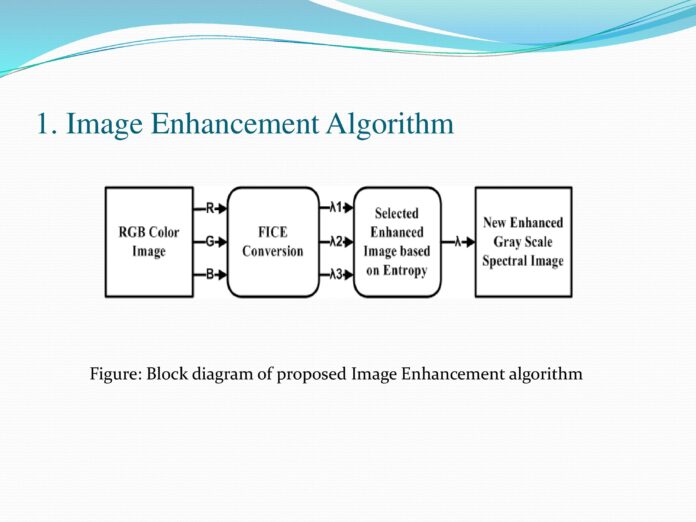Image enhancement refers to the process of highlighting certain information of an image, as well as weakening or removing any unnecessary information according to specific needs. For example, eliminating noise, revealing blurred details, and adjusting levels to highlight features of an image.
Image enhancement techniques improve the visibility of any portion or feature of the image and suppress the information in other parts. It is done only after restoration is completed. It includes brightening, sharpening, adjusting contrast, etc., so that the image is usable for further processing.
- Edge enhancement, an image-processing filter that increases the contrast of shape borders to improve its acutance (apparent sharpness)
- Image enhancement, improvement to perceived image quality
- Shadow and highlight enhancement, an image processing technique to correct exposure
What is the need of image enhancement?
Image enhancement is used when we need to focus or pick out some important features of an image. Certain spectral components of an image may need to be enhanced in images obtained from telescopes or space probes. In some cases, the contrast may need to be enhanced.
What is image enhancement in GIS?
Enhancements uses to make it easier for visual interpretation and understanding of imagery. Thus, for each application and each image, a custom adjustment of the range and distribution of brightness values is usually necessary.
What are the types of image enhancement?
- Filtering with morphological operators.
- Histogram equalization.
- Noise removal using a Wiener filter.
- Linear contrast adjustment.
- Median filtering.
- Unsharp mask filtering.
- Contrast-limited adaptive histogram equalization (CLAHE)
- Decorrelation stretch.
What is the purpose of image averaging?
Image averaging is a digital image processing technique that is often employ to enhance video images that have been corrupted by random noise. The algorithm operates by computing an average or arithmetic mean of the intensity values for each pixel position in a set of captured images from the same scene or view field.
How does image enhancement work?
At the very basic level, it works by repeatedly layering color shapes into the areas where there are missing pixels to achieve what’s called sparsity, a measure of image simplicity.” It also has deal with compression, which reduces the number of usable pixels for analysis.
What is the need of contrast enhancement ?
The contrast enhancement technique plays a vital role in image processing to bring out the information that exists within low dynamic range of that gray level image. To improve the quality of an image, it required to perform the operations like contrast enhancement and reduction or removal of noise.
How do you classify an image?
Image classification is a supervised learning problem: define a set of target classes (objects to identify in images), and train a model to recognize them using labeled example photos. Early computer vision models relied on raw pixel data as the input to the model.
What is image noise and image stretching?
Image noise is random variation of brightness or color information in images, and is usually an aspect of electronic noise. It can produce by the image sensor and circuitry of a scanner or digital camera. Image noise is an undesirable by-product of image capture that obscures the desired information.
What are the image compression techniques?
- Transform coding
- Reducing the color space to the most common colors in the image.
- Chroma subsampling.
- Fractal compression





